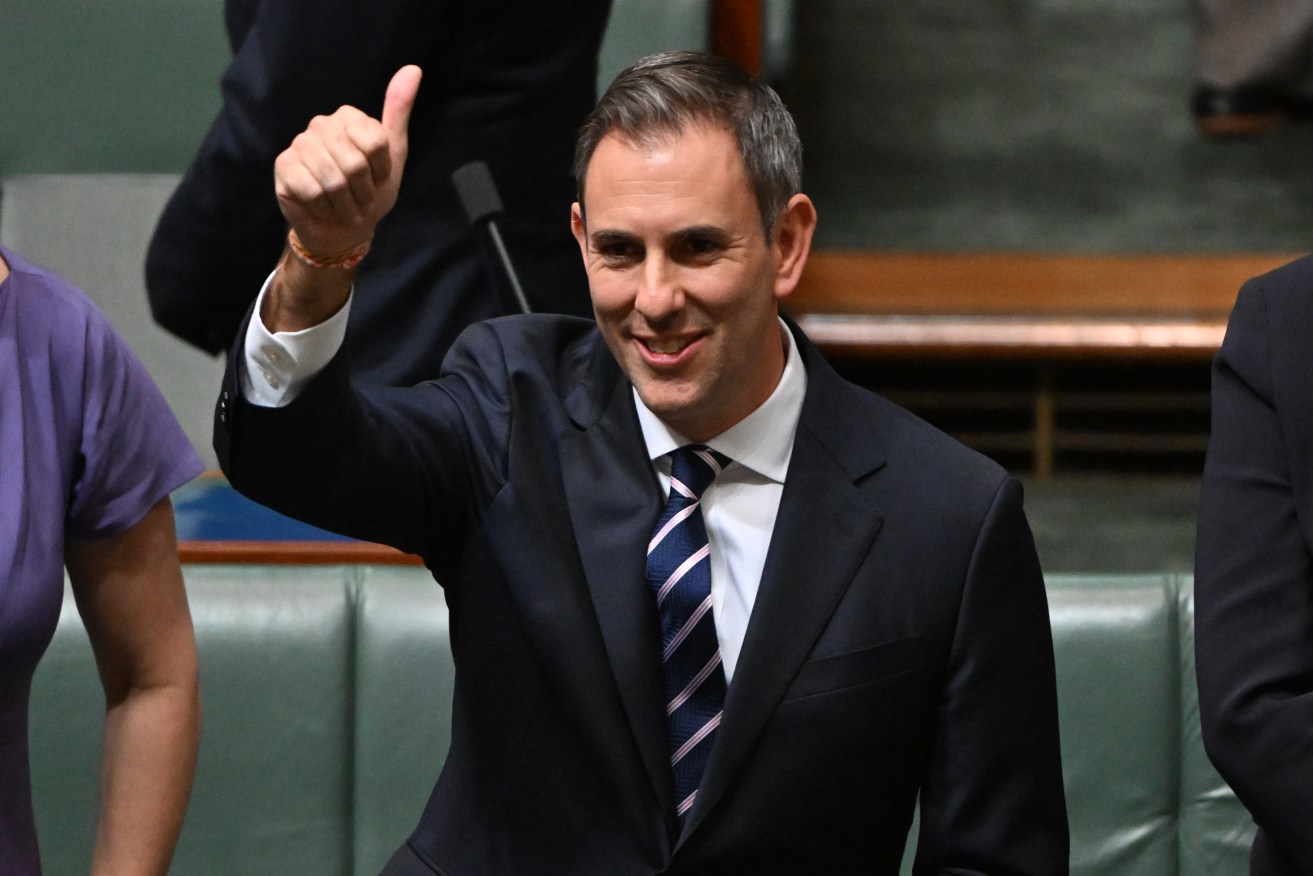Bulk billing boost the centrepiece of cost of living budget
Millions of Australians are set to benefit from cost-of-living relief, increased JobSeeker and Youth Allowance payments, free GP visits and lower than expected power prices under the Albanese Government’s second budget.

Treasurer Jim Chalmers before delivering the 2023/2024 Budget. Photo: AAP/Mick Tsikas
Treasurer Jim Chalmers promised the relief measures would not worsen already high inflation, treading a delicate balance while handing down the budget on Tuesday night.
An increase to welfare payments, boost to bulk billing and energy bill relief are some of the key items in the 2023/24 budget, which includes $14.6 billion in targeted cost-of-living measures at a time of global economic uncertainty.
The treasurer trumpeted a surplus for the current financial year of $4.2 billion, but it won’t continue for long, with a $13.9 billion deficit forecast for 2023/24.
Deficits will continue until at least 2026/27, albeit at much lower levels, driven by improvement to the budget bottom line.
Chalmers said cost-of-living measures would reduce inflation by 0.75 per cent in the next financial year.
“In all our decisions, we seek to strike a considered, methodical balance between spending restraint to keep the pressure off inflation, while doing what we can to help people struggling to make ends meet,” he said.
The measures include the expansion to bulk billing, with a $3.5 billion boost to provide free GP consults to more than 11 million patients.
The bulk billing incentive has been tripled for GP appointments for concession card holders and patients aged under 16.
As well, the base rate of JobSeeker and Youth Allowance will rise by $40 a fortnight from September.
“We understand that there will be people who are saying $40 a fortnight is not enough, there will be some who will be saying it is too much,” Chalmers said.
“We think we’ve struck the right balance between what we can afford and taking into consideration the economic pressures in the economy.”
Eligibility for a higher rate of JobSeeker will also be lowered from 60 to 55, following a rise in the number of older Australians on the payment.
About 52,000 Australians aged between 55 and 59 will get an extra $92.10 per fortnight.
Almost $5 billion will be spent over the next five years to support more than 1.1 million people on income support.
Single parents will see a boost, with the threshold for the single parent payment increasing to when the youngest child turns 14, up from the previous limit of eight years old.
The maximum rate of Commonwealth rent assistance will also rise by 15 per cent for 1.1 million households.
With rising power prices being one of the biggest costs to households, energy bill relief has also been a key feature of the federal budget.
The government has set aside $3 billion in relief measures as part of partnerships with states and territories.
Energy bill relief of $500 will be handed out to five million households, while $650 payments will be sent to one million small businesses.
It’s forecast energy relief measures would lead to price increases for electricity being 25 percentage points less, while gas prices rises will be 16 percentage points lower.
Low-income Australians and children will be eligible for bulk-billed doctor visits with Medicare reforms at the heart of the federal budget.
Bulk billing incentives will be tripled for general practice consultations for children under 16 and concession card holders as part of a $3.5 billion commitment over five years.
The incentives will apply to all face-to-face consultations and telehealth services and give more than 11 million people access to a GP with no out-of-pocket costs.
Chalmers said the changes were the centrepiece of the budget and would ensure the quality of a person’s health care was guaranteed by their Medicare card, not their credit card.
“One of the things that makes this the best country in the world is our shared belief that every Australian should be able to access affordable, reliable health care,” he said.
“But right now, too many people are finding it more and more difficult to see a doctor.”
Health spending makes up about a sixth of government expenses in 2023/24, totalling $106.5b.
An extra eight urgent care clinics will also be opened by the end of the year, taking the total number across the country to 58.
The $358.5m funding boost will ensure the clinics stay open for longer hours to relieve overstretched GPs and take pressure off hospital emergency rooms.
More than $445m over five years will boost a workforce incentive program, encouraging general practices to employ more nurses and other health professionals.
Australian Medical Association Steve Robson said the program had been underfunded for years and the extra money would help GPs and help make care more convenient and accessible for patients.
The budget also locks in prescription changes from September to allow more than 300 medicines to be dispensed in greater quantities.
More than $1b over five years will be allocated to allow two months’ worth of certain medicines to be dispensed by pharmacies at one time, saving some patients up to $180 a year.
New medicines will be added to the Pharmaceutical Benefits Scheme at a cost of more than $2b and an extra $449.4m has been allocated to add new listings on the National Immunisation Program.
Nearly $20m will be allocated over four years to establish the MyMedicare system, which aims to strengthen continuity of care and doctor-patient relationships.
Australian Chamber of Commerce and Industry chief executive Andrew McKellar said while a surplus was delivered, economic uncertainty remained.
“With the prospect of returning to a structural deficit of more than $35 billion in two years, we cannot rely on record commodity windfalls, strong migration inflows and an ultra-tight labour market to drive down debt,” he said.
-with AAP




